| ________________
CM . . .
. Volume XVII Number 11. . . .November 12, 2010 
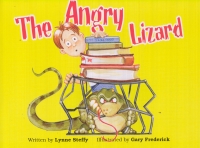 |
The Angry Lizard. (The Felt Feelings).
Lynne Steffy. Illustrated by Gary Frederick.
Renfrew, ON: General Store Publishing House, 2010.
12 pp., stapled, $10.95 each or $87.50 for all eight.
ISBN 978-1-897508-63-3.
Subject Heading:
Anger-Juvenile literature.
Preschool-grade 2 / Ages 4-7.
Review by Gail Hamilton.
** /4
|
| |
|
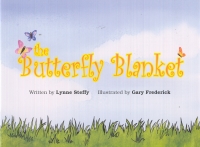 |
The Butterfly Blanket. (The Felt Feelings).
Lynne Steffy. Illustrated by Gary Frederick.
Renfrew, ON: General Store Publishing House, 2010.
12 pp., stapled, $10.95 each or $87.50 for all eight.
ISBN 978-1-897508-65-7.
Subject Headings:
Grief in children-Juvenile literature.
Caregivers-Death-Juvenile literature.
Grief-Juvenile literature.
Preschool-grade 2 / Ages 4-7.
Review by Gail Hamilton.
**½ /4
|
| |
|
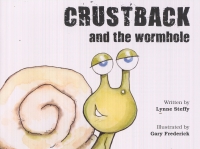 |
Crustback and the Wormhole. (The Felt Feelings).
Lynne Steffy. Illustrated by Gary Frederick.
Renfrew, ON: General Store Publishing House, 2010.
12 pp., stapled, $10.95 each or $87.50 for all eight.
ISBN 978-1-897508-62-6.
Subject Headings:
Divorce-Juvenile literature.
Separation (Psychology)-Juvenile literature.
Children of divorced parents-Juvenile literature.
Preschool-grade 2 / Ages 4-7.
Review by Gail Hamilton.
** /4
|
| |
|
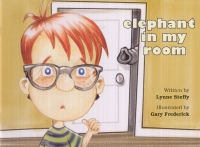 |
Elephant in my Room. (The Felt Feelings).
Lynne Steffy. Illustrated by Gary Frederick.
Renfrew, ON: General Store Publishing House, 2010.
12 pp., stapled, $10.95 each or $87.50 for all eight.
ISBN 978-1-897508-60-2.
Subject Headings:
Emotions-Juvenile literature.
Anxiety-Juvenile literature.
Depression, Mental-Juvenile literature.
Preschool-grade 2 / Ages 4-7.
Review by Gail Hamilton.
**½ /4
|
| |
|
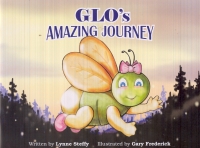 |
Glo's Amazing Journey. (The Felt Feelings).
Lynne Steffy. Illustrated by Gary Frederick.
Renfrew, ON: General Store Publishing House, 2010.
12 pp., stapled, $10.95 each or $87.50 for all eight.
ISBN 978-1-897508-64-0.
Subject Headings:
Children with disabilities-Juvenile literature.
Sick children-Juvenile literature.
Resilience (Personality trait)-Juvenile literature.
Preschool-grade 2 / Ages 4-7.
Review by Gail Hamilton.
*** /4
|
| |
|
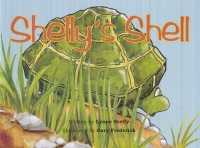 |
Shelly's Shell. (The Felt Feelings).
Lynne Steffy. Illustrated by Gary Frederick.
Renfrew, ON: General Store Publishing House, 2010.
12 pp., stapled, $10.95 each or $87.50 for all eight.
ISBN 978-1-897508-66-4.
Subject Headings:
Sexually abused children-Juvenile literature.
Sexually abused children-Rehabilitation-Juvenile literature.
Preschool-grade 2 / Ages 4-7.
Review by Gail Hamilton.
**½ /4
|
| |
|
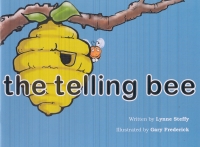 |
The Telling Bee. (The Felt Feelings).
Lynne Steffy. Illustrated by Gary Frederick.
Renfrew, ON: General Store Publishing House, 2010.
12 pp., stapled, $10.95 each or $87.50 for all eight.
ISBN 978-1-897508-59-6.
Subject Headings:
Child abuse-Juvenile literature.
Bullying-Juvenile literature.
Preschool-grade 2 / Ages 4-7.
Review by Gail Hamilton.
** /4
|
| |
|
 |
Stretch. (The Felt Feelings).
Lynne Steffy. Illustrated by Gary Frederick.
Renfrew, ON: General Store Publishing House, 2010.
12 pp., stapled, $10.95 each or $87.50 for all eight.
ISBN 978-1-897508-61-9.
Subject Headings:
Families-Juvenile literature.
Interpersonal conflict-Juvenile literature.
Preschool-grade 2 / Ages 4-7.
Review by Gail Hamilton.
**/4
|
| |
|

excerpt:
One day, when the sun was about to go down and Carrot was ready to go home to his nest, a mean bee flew up and started buzzing around him. The other bee hurt Carrot. Then he told Carrot that he was a dumb bee, who looked stupid with his orange stripes. Carrot did not know what to do, so he buried his head inside of a big purple flower and waited for the mean bee to go away.
"Don't you know that you are supposed to be yellow?" the other bee said.
Carrot did not answer. He just kept his head inside of the flower and pretended that the big mean bee was gone. Before the bee left, he told Carrot never to tell anyone that he had hurt him.
"If you tell what I did," said the bee, "you are going to get in big trouble. Besides, no one will ever believe what you say because you are weird and orange." (From The Telling Bee.)
Social worker and children's therapist Lynne Steffy has created the eight-volume "Felt Feelings" series to support teachers, guidance counsellors, therapists and parents who are helping children to deal with difficult issues. Each story revolves around a different problem- anger management, living with a disability, sexual abuse, bullying, divorce, death of a parent, family conflict and difficulty expressing one's feelings. Occasionally, the main characters are children, but more often they are insects, animals and imaginary creatures. Books begin with a facilitator's guide which describes the theme of the story, provides a very brief synopsis, and directs the adult reader to the questions at the back of the book. (It is useful to read this section as one of the titles, Shelly's Shell, has a special cautionary note.) The use of puppets and play acting is also encouraged. Stories are very short- only 11 pages long, including the question page. On the plus side, the use of animals and imaginary creatures as characters will, perhaps, make children feel "safe" and encourage them to talk more freely about the issue at hand. As well, the charming coloured and black and white illustrations are highly appealing.
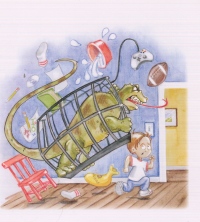 However, the books have several weaknesses. Firstly, there is far too much text (and not enough illustrations). In fact, several of the titles have double-page spreads comprised entirely of text. Secondly, some of the stories do not flow as well as others and omit important details. Thirdly, the books' covers are very flimsy and will not withstand wear. Finally, the questions at the back of the books are fairly basic, as are the suggestions for dealing with the featured issues. Though the premise of the series is sound, these books require some revision. However, the books have several weaknesses. Firstly, there is far too much text (and not enough illustrations). In fact, several of the titles have double-page spreads comprised entirely of text. Secondly, some of the stories do not flow as well as others and omit important details. Thirdly, the books' covers are very flimsy and will not withstand wear. Finally, the questions at the back of the books are fairly basic, as are the suggestions for dealing with the featured issues. Though the premise of the series is sound, these books require some revision.
The Angry Lizard encourages children to acknowledge their anger and to find appropriate ways in which to express it. After many years of yearning for a pet, Matthew finally gets one, a large monitor lizard, for his eighth birthday. But Mon, the lizard, behaves badly, thrashing around, knocking things over and destroying his cage and Matthew's bedroom. When Mon's tail thrashing knocks Matthew's tooth out, the tooth fairy appears and helps the boy and the lizard understand about anger and how to deal with it. The suggestions given are few: talk to someone about your feelings, and take slow, deep breaths (in this case, Matthew lays down on the floor to demonstrate). Perhaps the author could have provided a few more suggestions on anger management and delved a bit more deeply in the questioning at the end of the book.
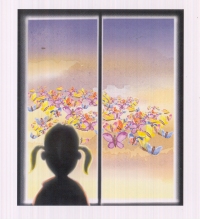 Written for children who have lost a parent or caregiver to illness, The Butterfly Blanket is designed to show kids that, even when a parent dies, he or she still remains connected to the child. Over a period of time, Michelle asks her mother why leaves fall to the ground, why a snail shell is empty, and why her hamster has died. In each case, her mother replies that it is time for it to rest. When Michelle is a little older, her mom becomes sick. One summer evening, a colourful blanket of butterflies covers Michelle's yard. Michelle's mom says that the butterflies are there to watch over her and protect her. After her mother dies, whenever Michelle sees the butterflies, she is reminded that her mother is in her heart. Sentimental and a bit maudlin, this story leaves a few questions unanswered. For instance, where is Michelle's dad? And who is going to look after Michelle now that her mother is gone? Finally, the concept of the butterflies serving as a reminder of the girl's mother might be lost on very young children.
Written for children who have lost a parent or caregiver to illness, The Butterfly Blanket is designed to show kids that, even when a parent dies, he or she still remains connected to the child. Over a period of time, Michelle asks her mother why leaves fall to the ground, why a snail shell is empty, and why her hamster has died. In each case, her mother replies that it is time for it to rest. When Michelle is a little older, her mom becomes sick. One summer evening, a colourful blanket of butterflies covers Michelle's yard. Michelle's mom says that the butterflies are there to watch over her and protect her. After her mother dies, whenever Michelle sees the butterflies, she is reminded that her mother is in her heart. Sentimental and a bit maudlin, this story leaves a few questions unanswered. For instance, where is Michelle's dad? And who is going to look after Michelle now that her mother is gone? Finally, the concept of the butterflies serving as a reminder of the girl's mother might be lost on very young children.
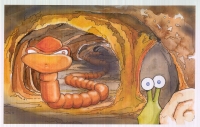 Crustback and the Wormhole deals with the problem of the non-custodial parent's lack of involvement with the child when the parents are separated. When the parents of Crustback the snail separate, Crustback's dad moves out of the garden but promises to come for a visit. However, on the day of the visit, Dad is a no-show. The next day, Crustback climbs to the top of a hill of dirt and accidentally falls into a wormhole. There he meets Wiggle the worm who listens to his tale of woe. Wiggle explains that it's okay to feel sad and angry, but talking about your feelings (and wiggling) can help. Though young children might find the idea of wiggling amusing, there is really only one helpful suggestion in this book.
Crustback and the Wormhole deals with the problem of the non-custodial parent's lack of involvement with the child when the parents are separated. When the parents of Crustback the snail separate, Crustback's dad moves out of the garden but promises to come for a visit. However, on the day of the visit, Dad is a no-show. The next day, Crustback climbs to the top of a hill of dirt and accidentally falls into a wormhole. There he meets Wiggle the worm who listens to his tale of woe. Wiggle explains that it's okay to feel sad and angry, but talking about your feelings (and wiggling) can help. Though young children might find the idea of wiggling amusing, there is really only one helpful suggestion in this book.
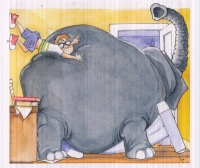 Elephant in My Room is written for kids who feel disempowered and find it difficult to express their feelings. Joshua finds an elephant in his room. The elephant reads, watches TV and sleeps, but never says a word. Every time Joshua experiences something upsetting and says nothing – for example, when a schoolyard bully steals his ball or when his teacher accuses him of cheating on a math test – the elephant grows larger. At his wit's end when his mother grounds him, Joshua finally gets angry and orders the elephant to go away. From then on, every time Joshua has the courage to speak up for himself, the elephant shrinks a little, until eventually, it disappears. Whether young children will associate, on their own, the elephant's decreasing size with Joshua's increasing assertiveness remains to be seen.
Elephant in My Room is written for kids who feel disempowered and find it difficult to express their feelings. Joshua finds an elephant in his room. The elephant reads, watches TV and sleeps, but never says a word. Every time Joshua experiences something upsetting and says nothing – for example, when a schoolyard bully steals his ball or when his teacher accuses him of cheating on a math test – the elephant grows larger. At his wit's end when his mother grounds him, Joshua finally gets angry and orders the elephant to go away. From then on, every time Joshua has the courage to speak up for himself, the elephant shrinks a little, until eventually, it disappears. Whether young children will associate, on their own, the elephant's decreasing size with Joshua's increasing assertiveness remains to be seen.
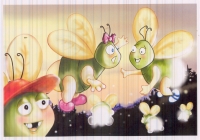 Glo's Amazing Journey helps children to cope with illness or a disability and teaches them to persevere despite the challenges. Unlike other lightning bugs, Glo has never been able to light up, and so her parents take her to the Healing Tree. She has an operation to fix her light, and, after a few days, she is released from the "hospital." Though her light is very faint, Glo is determined to go, for the first time, on the lightning bugs' annual journey to the sea. She enlists the aid of her family and friends to light her path on the three-day flight. Glo manages to keep up with the others on the first two days, but on the third, a huge gust of wind pushes her backwards, and she finds herself separated from the group. Disoriented in the dark, Glo tries to figure out a way to find the other lightning bugs. Finally, she decides to fly to the top of a hill and look around. There, in the distance, she spies thousands of specks of light and flies towards them. Happily reunited with her family and friends, Glo flies ahead of them to the sea.
Glo's Amazing Journey helps children to cope with illness or a disability and teaches them to persevere despite the challenges. Unlike other lightning bugs, Glo has never been able to light up, and so her parents take her to the Healing Tree. She has an operation to fix her light, and, after a few days, she is released from the "hospital." Though her light is very faint, Glo is determined to go, for the first time, on the lightning bugs' annual journey to the sea. She enlists the aid of her family and friends to light her path on the three-day flight. Glo manages to keep up with the others on the first two days, but on the third, a huge gust of wind pushes her backwards, and she finds herself separated from the group. Disoriented in the dark, Glo tries to figure out a way to find the other lightning bugs. Finally, she decides to fly to the top of a hill and look around. There, in the distance, she spies thousands of specks of light and flies towards them. Happily reunited with her family and friends, Glo flies ahead of them to the sea.
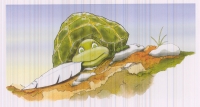 Shelly's Shell is meant for use only with confirmed cases of sexual abuse. Shelly, a young turtle, is playing on a rock when an adult turtle (aptly named Mr. Turtle) sits down beside her and touches her under her shell. He warns her not to tell anyone. Though Shelly wants to tell her mother, she is afraid and retreats to her room instead, not wanting to go to out, and she imagines herself to be ugly and stupid. After a long period of time, during which Shelly's shell thickens, her mother finally insists that Shelly get some sun. Shelly goes down by the river where she meets a swan. The swan explains that she was sent to help her and that it will take time for Shelly to trust adults again. Shelly learns that her thickening shell is just a protective mechanism and that the incident with Mr. Turtle was not her fault. The swan gives Shelly one of her feathers, a magic feather that Shelly can use to make her shell thinner, but the magic can work better if Shelly continues to do all the things that she loves to do. Shelly is encouraged to take a trusted adult to places where she fears to be alone and to talk to an adult when she is feeling scared or sad. (Note to adults: some of the discussion that might be sparked by the questions at the back of the book requires careful and thoughtful consideration so as not to instill fear in the children.)
Shelly's Shell is meant for use only with confirmed cases of sexual abuse. Shelly, a young turtle, is playing on a rock when an adult turtle (aptly named Mr. Turtle) sits down beside her and touches her under her shell. He warns her not to tell anyone. Though Shelly wants to tell her mother, she is afraid and retreats to her room instead, not wanting to go to out, and she imagines herself to be ugly and stupid. After a long period of time, during which Shelly's shell thickens, her mother finally insists that Shelly get some sun. Shelly goes down by the river where she meets a swan. The swan explains that she was sent to help her and that it will take time for Shelly to trust adults again. Shelly learns that her thickening shell is just a protective mechanism and that the incident with Mr. Turtle was not her fault. The swan gives Shelly one of her feathers, a magic feather that Shelly can use to make her shell thinner, but the magic can work better if Shelly continues to do all the things that she loves to do. Shelly is encouraged to take a trusted adult to places where she fears to be alone and to talk to an adult when she is feeling scared or sad. (Note to adults: some of the discussion that might be sparked by the questions at the back of the book requires careful and thoughtful consideration so as not to instill fear in the children.)
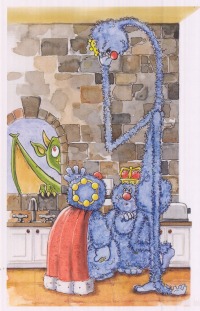 Stretch deals with family conflict. Though Stretch, the Prince of Woogleville, is envied by his friends, he is unhappy because his parents do not get along and he is caught in the middle. Every time the king and queen argue, Stretch grows taller (if he is caught in the middle, shouldn't he be growing wider?). To find out why Stretch seems to be growing, his parents take him to the Royal Magician who makes a truth-telling potion for him. The potion causes Stretch to float to the ceiling, and, once he's up there, he begins to sing a song explaining why he feels so "stretched." Embarrassed by this revelation, the king and queen agree to try harder to get along and enlist the magician's help. Though the need to resolve conflict in an effective way is the theme of this title, there are no suggestions on how to do so for either Stretch or his parents.
Stretch deals with family conflict. Though Stretch, the Prince of Woogleville, is envied by his friends, he is unhappy because his parents do not get along and he is caught in the middle. Every time the king and queen argue, Stretch grows taller (if he is caught in the middle, shouldn't he be growing wider?). To find out why Stretch seems to be growing, his parents take him to the Royal Magician who makes a truth-telling potion for him. The potion causes Stretch to float to the ceiling, and, once he's up there, he begins to sing a song explaining why he feels so "stretched." Embarrassed by this revelation, the king and queen agree to try harder to get along and enlist the magician's help. Though the need to resolve conflict in an effective way is the theme of this title, there are no suggestions on how to do so for either Stretch or his parents.
The Telling Bee is meant for children who either have been bullied or abused (or if the abuse is suspected). Carrot is an orange and black bee that is teased because he looks different from the other bees. One evening, another bee teases and hurts Carrot and threatens to make it even worse if Carrot tells anyone. Carrot tries to tell a tree and a cloud his problems, but the former is too busy to listen and the latter doesn't believe him. 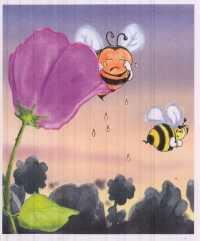 An empathetic turtle happens along, and, after listening to Carrot's story, tells him that an adult's job is to protect a child and that Carrot needs to keep telling his story until he finds someone who will do something about the bullying. The turtle and Carrot set off to tell more creatures, but the turtle doe not actually offer any other advice, nor does the turtle confront the bully. (In this title, there is a case of an illustration not matching the text.) An empathetic turtle happens along, and, after listening to Carrot's story, tells him that an adult's job is to protect a child and that Carrot needs to keep telling his story until he finds someone who will do something about the bullying. The turtle and Carrot set off to tell more creatures, but the turtle doe not actually offer any other advice, nor does the turtle confront the bully. (In this title, there is a case of an illustration not matching the text.)
All of the themes in the series are presented in non-threatening ways; however, there are very few suggestions for dealing with these issues other than talking about one's feelings. One need not be a child therapist to create the types of questions that appear at the back of the books- common sense and a sympathetic ear are all that's needed. Parents, however, might find the questions useful as discussion starters. While some stories are a bit stronger than others, generally, the titles need some revision in terms of plot and details.
Recommended with reservations.
Gail Hamilton is a retired teacher-librarian in Winnipeg, MB.

To comment
on this title or this review, send mail to cm@umanitoba.ca.
Copyright © the Manitoba Library Association. Reproduction for personal
use is permitted only if this copyright notice is maintained. Any
other reproduction is prohibited without permission.
NEXT REVIEW |
TABLE OF CONTENTS FOR THIS ISSUE
- November 12, 2010.
AUTHORS |
TITLES |
MEDIA REVIEWS |
PROFILES |
BACK ISSUES |
SEARCH |
CMARCHIVE |
HOME |








 However, the books have several weaknesses. Firstly, there is far too much text (and not enough illustrations). In fact, several of the titles have double-page spreads comprised entirely of text. Secondly, some of the stories do not flow as well as others and omit important details. Thirdly, the books' covers are very flimsy and will not withstand wear. Finally, the questions at the back of the books are fairly basic, as are the suggestions for dealing with the featured issues. Though the premise of the series is sound, these books require some revision.
However, the books have several weaknesses. Firstly, there is far too much text (and not enough illustrations). In fact, several of the titles have double-page spreads comprised entirely of text. Secondly, some of the stories do not flow as well as others and omit important details. Thirdly, the books' covers are very flimsy and will not withstand wear. Finally, the questions at the back of the books are fairly basic, as are the suggestions for dealing with the featured issues. Though the premise of the series is sound, these books require some revision.
 Written for children who have lost a parent or caregiver to illness, The Butterfly Blanket is designed to show kids that, even when a parent dies, he or she still remains connected to the child. Over a period of time, Michelle asks her mother why leaves fall to the ground, why a snail shell is empty, and why her hamster has died. In each case, her mother replies that it is time for it to rest. When Michelle is a little older, her mom becomes sick. One summer evening, a colourful blanket of butterflies covers Michelle's yard. Michelle's mom says that the butterflies are there to watch over her and protect her. After her mother dies, whenever Michelle sees the butterflies, she is reminded that her mother is in her heart. Sentimental and a bit maudlin, this story leaves a few questions unanswered. For instance, where is Michelle's dad? And who is going to look after Michelle now that her mother is gone? Finally, the concept of the butterflies serving as a reminder of the girl's mother might be lost on very young children.
Written for children who have lost a parent or caregiver to illness, The Butterfly Blanket is designed to show kids that, even when a parent dies, he or she still remains connected to the child. Over a period of time, Michelle asks her mother why leaves fall to the ground, why a snail shell is empty, and why her hamster has died. In each case, her mother replies that it is time for it to rest. When Michelle is a little older, her mom becomes sick. One summer evening, a colourful blanket of butterflies covers Michelle's yard. Michelle's mom says that the butterflies are there to watch over her and protect her. After her mother dies, whenever Michelle sees the butterflies, she is reminded that her mother is in her heart. Sentimental and a bit maudlin, this story leaves a few questions unanswered. For instance, where is Michelle's dad? And who is going to look after Michelle now that her mother is gone? Finally, the concept of the butterflies serving as a reminder of the girl's mother might be lost on very young children.
 Crustback and the Wormhole deals with the problem of the non-custodial parent's lack of involvement with the child when the parents are separated. When the parents of Crustback the snail separate, Crustback's dad moves out of the garden but promises to come for a visit. However, on the day of the visit, Dad is a no-show. The next day, Crustback climbs to the top of a hill of dirt and accidentally falls into a wormhole. There he meets Wiggle the worm who listens to his tale of woe. Wiggle explains that it's okay to feel sad and angry, but talking about your feelings (and wiggling) can help. Though young children might find the idea of wiggling amusing, there is really only one helpful suggestion in this book.
Crustback and the Wormhole deals with the problem of the non-custodial parent's lack of involvement with the child when the parents are separated. When the parents of Crustback the snail separate, Crustback's dad moves out of the garden but promises to come for a visit. However, on the day of the visit, Dad is a no-show. The next day, Crustback climbs to the top of a hill of dirt and accidentally falls into a wormhole. There he meets Wiggle the worm who listens to his tale of woe. Wiggle explains that it's okay to feel sad and angry, but talking about your feelings (and wiggling) can help. Though young children might find the idea of wiggling amusing, there is really only one helpful suggestion in this book.
 Elephant in My Room is written for kids who feel disempowered and find it difficult to express their feelings. Joshua finds an elephant in his room. The elephant reads, watches TV and sleeps, but never says a word. Every time Joshua experiences something upsetting and says nothing – for example, when a schoolyard bully steals his ball or when his teacher accuses him of cheating on a math test – the elephant grows larger. At his wit's end when his mother grounds him, Joshua finally gets angry and orders the elephant to go away. From then on, every time Joshua has the courage to speak up for himself, the elephant shrinks a little, until eventually, it disappears. Whether young children will associate, on their own, the elephant's decreasing size with Joshua's increasing assertiveness remains to be seen.
Elephant in My Room is written for kids who feel disempowered and find it difficult to express their feelings. Joshua finds an elephant in his room. The elephant reads, watches TV and sleeps, but never says a word. Every time Joshua experiences something upsetting and says nothing – for example, when a schoolyard bully steals his ball or when his teacher accuses him of cheating on a math test – the elephant grows larger. At his wit's end when his mother grounds him, Joshua finally gets angry and orders the elephant to go away. From then on, every time Joshua has the courage to speak up for himself, the elephant shrinks a little, until eventually, it disappears. Whether young children will associate, on their own, the elephant's decreasing size with Joshua's increasing assertiveness remains to be seen.
 Glo's Amazing Journey helps children to cope with illness or a disability and teaches them to persevere despite the challenges. Unlike other lightning bugs, Glo has never been able to light up, and so her parents take her to the Healing Tree. She has an operation to fix her light, and, after a few days, she is released from the "hospital." Though her light is very faint, Glo is determined to go, for the first time, on the lightning bugs' annual journey to the sea. She enlists the aid of her family and friends to light her path on the three-day flight. Glo manages to keep up with the others on the first two days, but on the third, a huge gust of wind pushes her backwards, and she finds herself separated from the group. Disoriented in the dark, Glo tries to figure out a way to find the other lightning bugs. Finally, she decides to fly to the top of a hill and look around. There, in the distance, she spies thousands of specks of light and flies towards them. Happily reunited with her family and friends, Glo flies ahead of them to the sea.
Glo's Amazing Journey helps children to cope with illness or a disability and teaches them to persevere despite the challenges. Unlike other lightning bugs, Glo has never been able to light up, and so her parents take her to the Healing Tree. She has an operation to fix her light, and, after a few days, she is released from the "hospital." Though her light is very faint, Glo is determined to go, for the first time, on the lightning bugs' annual journey to the sea. She enlists the aid of her family and friends to light her path on the three-day flight. Glo manages to keep up with the others on the first two days, but on the third, a huge gust of wind pushes her backwards, and she finds herself separated from the group. Disoriented in the dark, Glo tries to figure out a way to find the other lightning bugs. Finally, she decides to fly to the top of a hill and look around. There, in the distance, she spies thousands of specks of light and flies towards them. Happily reunited with her family and friends, Glo flies ahead of them to the sea.
 Shelly's Shell is meant for use only with confirmed cases of sexual abuse. Shelly, a young turtle, is playing on a rock when an adult turtle (aptly named Mr. Turtle) sits down beside her and touches her under her shell. He warns her not to tell anyone. Though Shelly wants to tell her mother, she is afraid and retreats to her room instead, not wanting to go to out, and she imagines herself to be ugly and stupid. After a long period of time, during which Shelly's shell thickens, her mother finally insists that Shelly get some sun. Shelly goes down by the river where she meets a swan. The swan explains that she was sent to help her and that it will take time for Shelly to trust adults again. Shelly learns that her thickening shell is just a protective mechanism and that the incident with Mr. Turtle was not her fault. The swan gives Shelly one of her feathers, a magic feather that Shelly can use to make her shell thinner, but the magic can work better if Shelly continues to do all the things that she loves to do. Shelly is encouraged to take a trusted adult to places where she fears to be alone and to talk to an adult when she is feeling scared or sad. (Note to adults: some of the discussion that might be sparked by the questions at the back of the book requires careful and thoughtful consideration so as not to instill fear in the children.)
Shelly's Shell is meant for use only with confirmed cases of sexual abuse. Shelly, a young turtle, is playing on a rock when an adult turtle (aptly named Mr. Turtle) sits down beside her and touches her under her shell. He warns her not to tell anyone. Though Shelly wants to tell her mother, she is afraid and retreats to her room instead, not wanting to go to out, and she imagines herself to be ugly and stupid. After a long period of time, during which Shelly's shell thickens, her mother finally insists that Shelly get some sun. Shelly goes down by the river where she meets a swan. The swan explains that she was sent to help her and that it will take time for Shelly to trust adults again. Shelly learns that her thickening shell is just a protective mechanism and that the incident with Mr. Turtle was not her fault. The swan gives Shelly one of her feathers, a magic feather that Shelly can use to make her shell thinner, but the magic can work better if Shelly continues to do all the things that she loves to do. Shelly is encouraged to take a trusted adult to places where she fears to be alone and to talk to an adult when she is feeling scared or sad. (Note to adults: some of the discussion that might be sparked by the questions at the back of the book requires careful and thoughtful consideration so as not to instill fear in the children.)
 Stretch deals with family conflict. Though Stretch, the Prince of Woogleville, is envied by his friends, he is unhappy because his parents do not get along and he is caught in the middle. Every time the king and queen argue, Stretch grows taller (if he is caught in the middle, shouldn't he be growing wider?). To find out why Stretch seems to be growing, his parents take him to the Royal Magician who makes a truth-telling potion for him. The potion causes Stretch to float to the ceiling, and, once he's up there, he begins to sing a song explaining why he feels so "stretched." Embarrassed by this revelation, the king and queen agree to try harder to get along and enlist the magician's help. Though the need to resolve conflict in an effective way is the theme of this title, there are no suggestions on how to do so for either Stretch or his parents.
Stretch deals with family conflict. Though Stretch, the Prince of Woogleville, is envied by his friends, he is unhappy because his parents do not get along and he is caught in the middle. Every time the king and queen argue, Stretch grows taller (if he is caught in the middle, shouldn't he be growing wider?). To find out why Stretch seems to be growing, his parents take him to the Royal Magician who makes a truth-telling potion for him. The potion causes Stretch to float to the ceiling, and, once he's up there, he begins to sing a song explaining why he feels so "stretched." Embarrassed by this revelation, the king and queen agree to try harder to get along and enlist the magician's help. Though the need to resolve conflict in an effective way is the theme of this title, there are no suggestions on how to do so for either Stretch or his parents.
 An empathetic turtle happens along, and, after listening to Carrot's story, tells him that an adult's job is to protect a child and that Carrot needs to keep telling his story until he finds someone who will do something about the bullying. The turtle and Carrot set off to tell more creatures, but the turtle doe not actually offer any other advice, nor does the turtle confront the bully. (In this title, there is a case of an illustration not matching the text.)
An empathetic turtle happens along, and, after listening to Carrot's story, tells him that an adult's job is to protect a child and that Carrot needs to keep telling his story until he finds someone who will do something about the bullying. The turtle and Carrot set off to tell more creatures, but the turtle doe not actually offer any other advice, nor does the turtle confront the bully. (In this title, there is a case of an illustration not matching the text.)